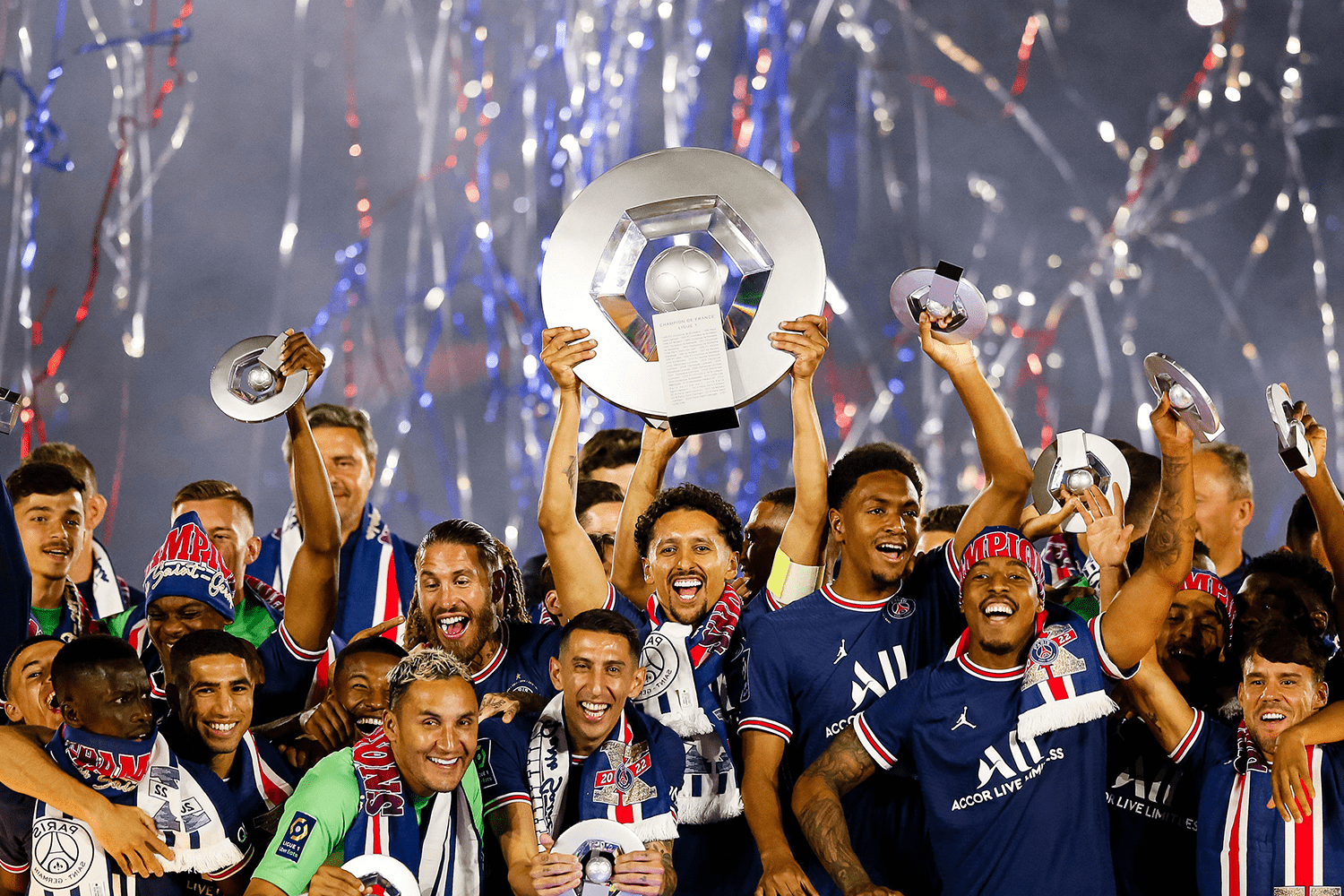The 2021/22 season delivered us an exciting campaign of Ligue 1 football, particularly in the race for the Champions League and Europa League places. The new season is nearly upon us, so let’s take a look at some of the teams, players, and narratives we have to look forward to in 2022/23.
Expected Goal (xG) Performance, Ligue 1 2021/22
Let’s dig deeper than the league table and examine the underlying metrics that powered each team. The table here shows the expected goal difference for each team in red and their actual goal difference in blue – with penalties excluded from both.
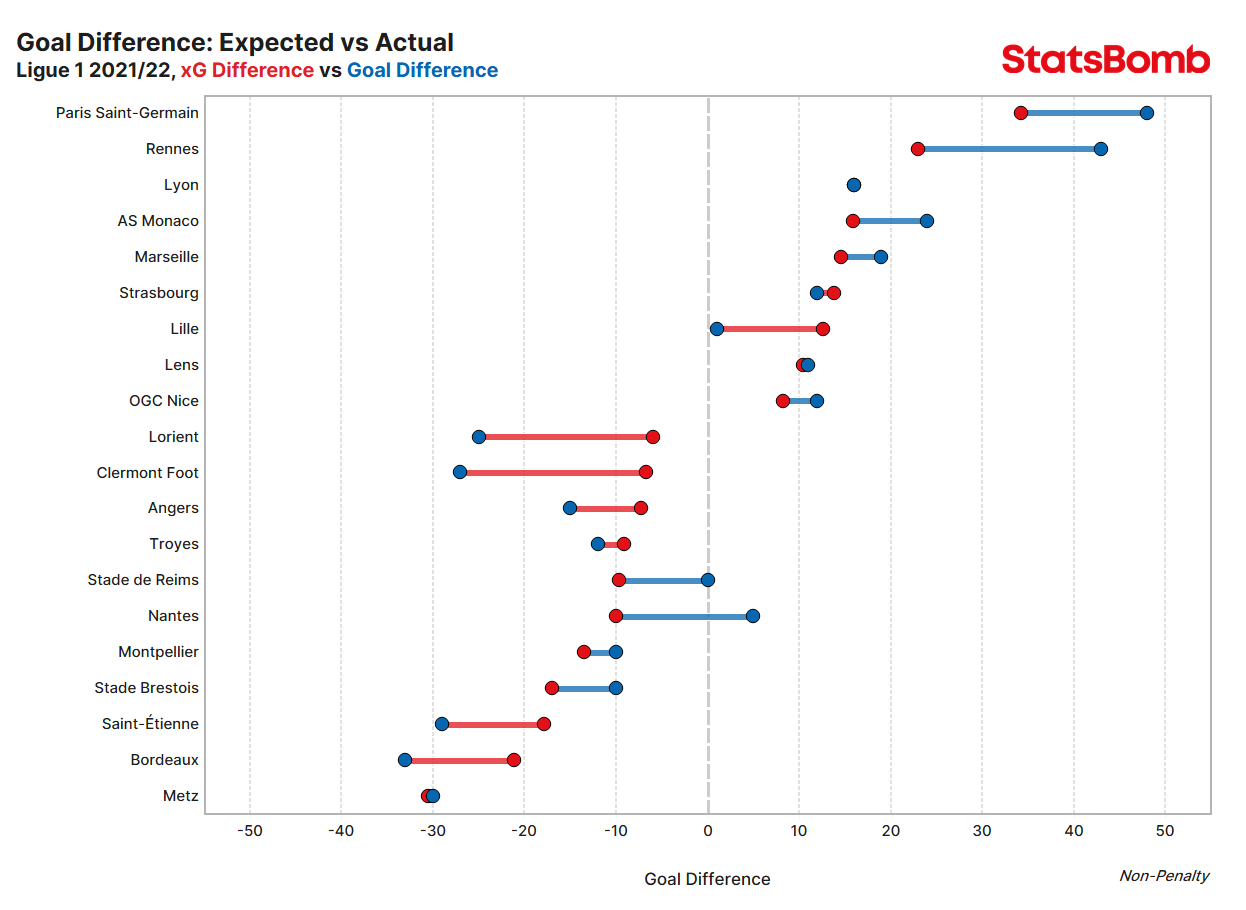
There are a few narratives on display here:
- There was a clear divide between the top half of the table and the bottom half - only some under and overperformance on the expected numbers blurred the disparity between them. Nantes and Lille were a good example of this: Lille underperformed by 11.5 goals while Nantes overperformed by 15 goals, so Nantes finished above Lille on goal difference. But, we can probably expect Lille to finish clear of Nantes this season, should general performance levels persist.
- Rennes somehow didn’t qualify for the Champions League despite being the 2nd-best team in both expected goal difference and actual goal difference. Their goal difference was a full 17 goals better off than Marseille and Monaco above them, but results against teams around them in the table meant they could only manage 4th place and a Europa League spot.
- Clermont Foot, in their first ever Ligue 1 season, and Lorient were dragged into the relegation battle and only finished four points clear of the drop. However, based on the chances each side created and conceded, they performed better than that would suggest -- only poor finishing and poor goalkeeping performances prevented them from picking up more points. Lorient replaced Christophe Pélissier with Régis Le Bris in the summer, who perhaps doesn’t need to change that much after all.
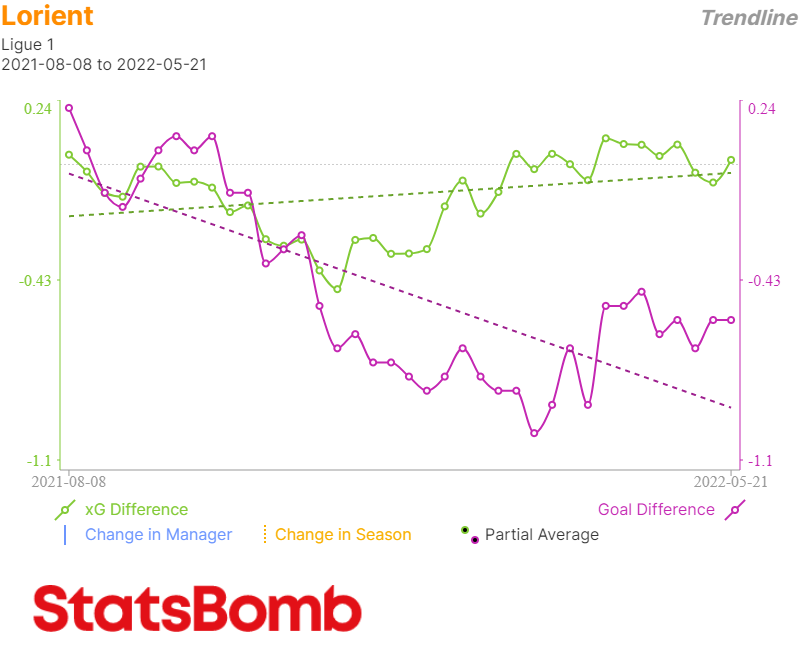
How will Paris Saint-Germain fare under Christophe Galtier?
Paris Saint-Germain managed to avoid the close title race they had to endure in 2020/21, winning the league by 15 points this time and regaining the title from Lille. But as we all know, Ligue 1 success alone is not enough to satiate the fiercely ambitious senior management at PSG, and it seemed to be telegraphed very early on in the campaign that Mauricio Pochettino was unlikely to stay beyond the end of the season.
So PSG have turned to the last manager to beat them to the title. Christophe Galtier arrives as one of the most respected managers on the continent for his work with Lille, progressing them as a club with their time together culminating in that 2020/21 league title.
There’s a sense he could be more suited to the challenges PSG face. For starters, his teams have always been impressive defensively. In their title-winning season, Lille had the best defence in Ligue 1, conceding just 23 goals from 25 xG Conceded. Their solid backline was the foundation for losing just three Ligue 1 games all season.
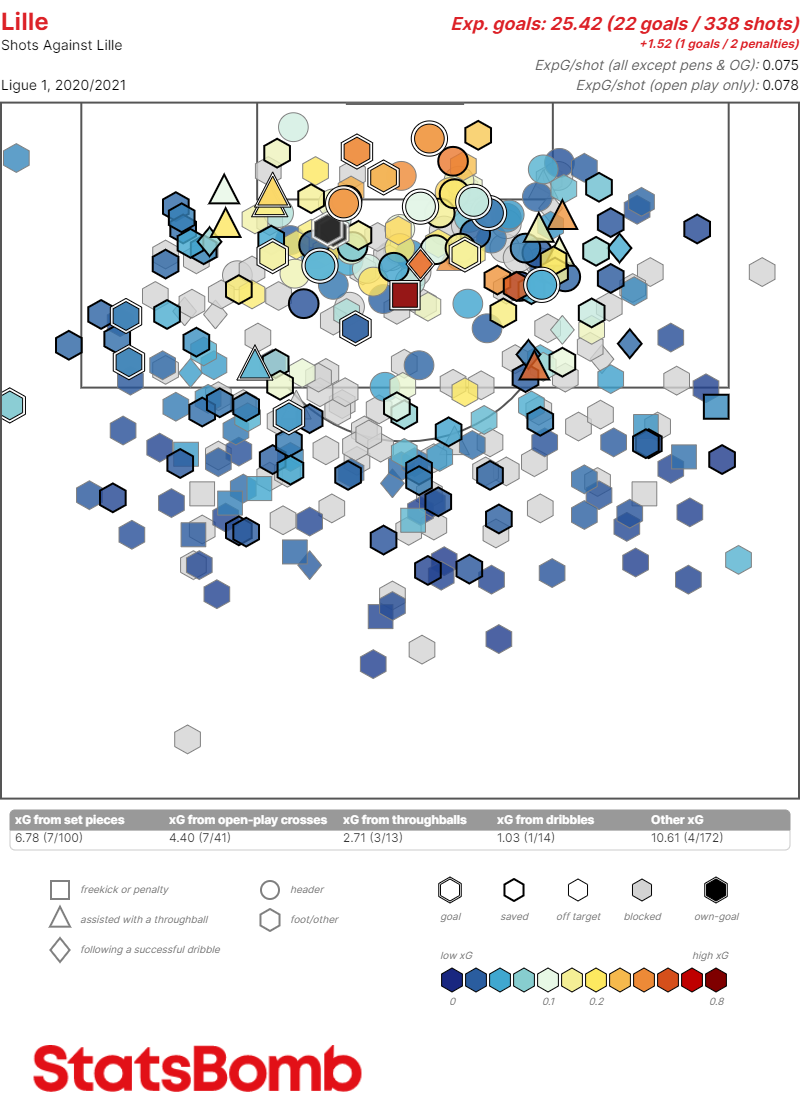
Galtier’s ability to coach a solid defence should improve PSG’s Champions League performances. They underperformed defensively in last season’s competition, conceding 9.1 xG in six group stage matches and then failing to hold a 2-0 aggregate lead with 30 minutes left in the R16 tie against Real Madrid.
On paper, he also seems a better stylistic fit for the squad. He’s shown evidence of being able to coach an effective team in transition, which should make the most of Kylian Mbappé’s obvious strengths. Lille created the most shots from counter-attacks under him in 2020/21. And he won’t require the trio of Mbappé, Lionel Messi and Neymar to press from the front either, which is just as well -- because they don’t.
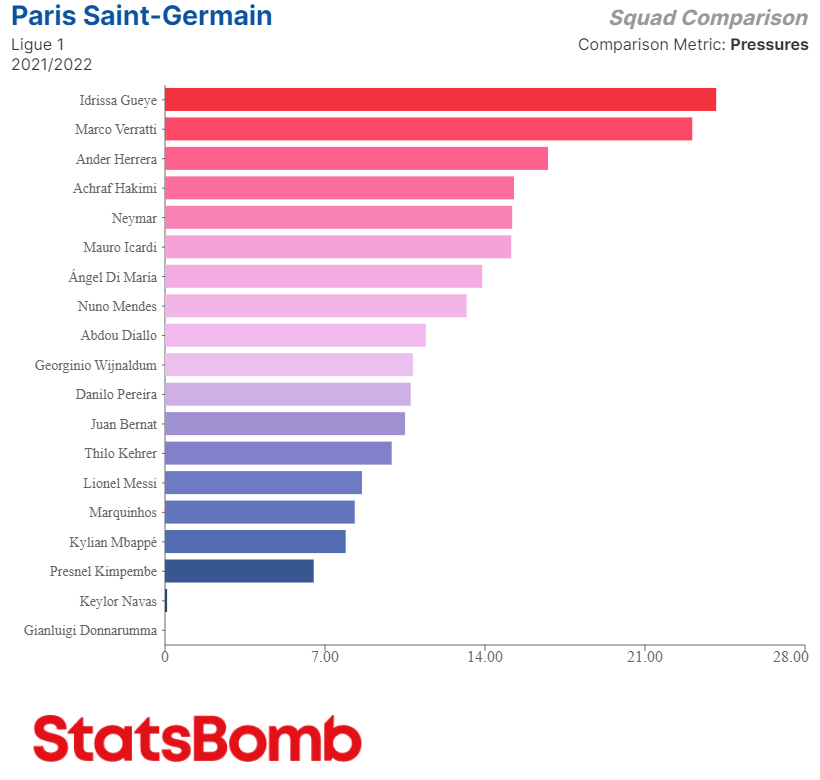
With an impressive track record of improving teams and getting them to outperform their resources, Galtier has earned his shot at trying to win a Champions League trophy.
What went wrong at Lyon?
As we can see from the xG table above, Lyon had the third-best expected goal difference and the fifth-best goal difference (excluding penalties) in Ligue 1 last season. So why did they only finish 8th?
It took the side a while to adapt to Peter Bosz’s methods. Lyon won just seven games in the first half of the season and at the midway point were sat in the bottom half of the table, with an expected goal difference of precisely 0. Not the standards you’d expect to see from a side with Champions League ambitions.
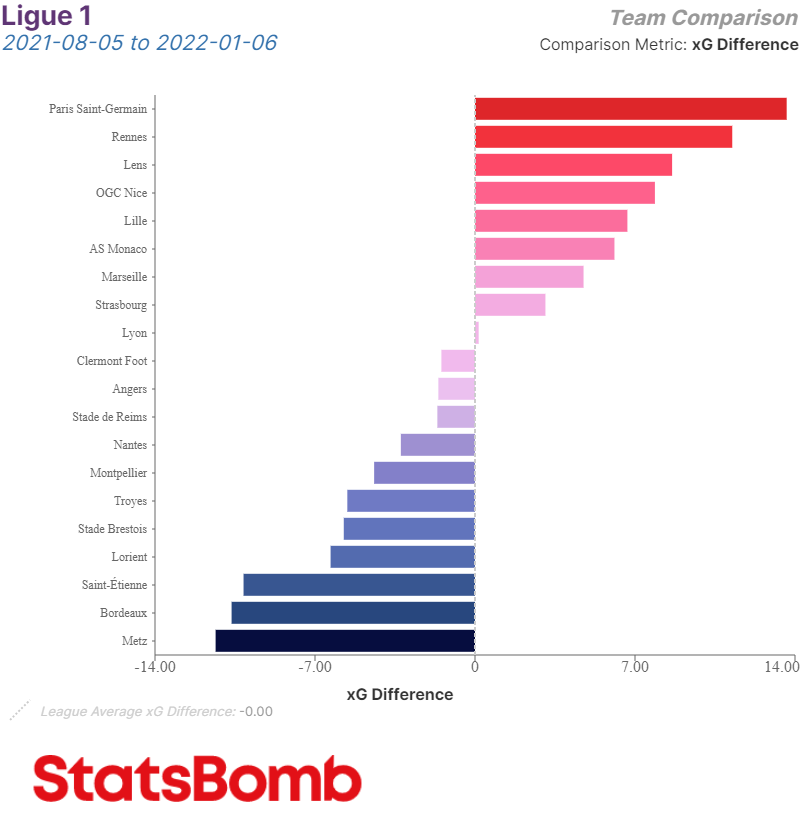
However, there were plenty of signs of encouragement in the second half of the campaign. Lyon picked up more points (W10-D4-L5), and their performances improved significantly as the team began to play in the manner Bosz was aiming for. The team counterpressed more, which resulted in more High Press Shots (shots within 5 seconds of a turnover in the attacking half), more Counter Attacking Shots, and an improved defensive record as the opposition found it more difficult to create chances against them.
Keep these standards up, and Lyon could be a team to watch at the top of the table this season.
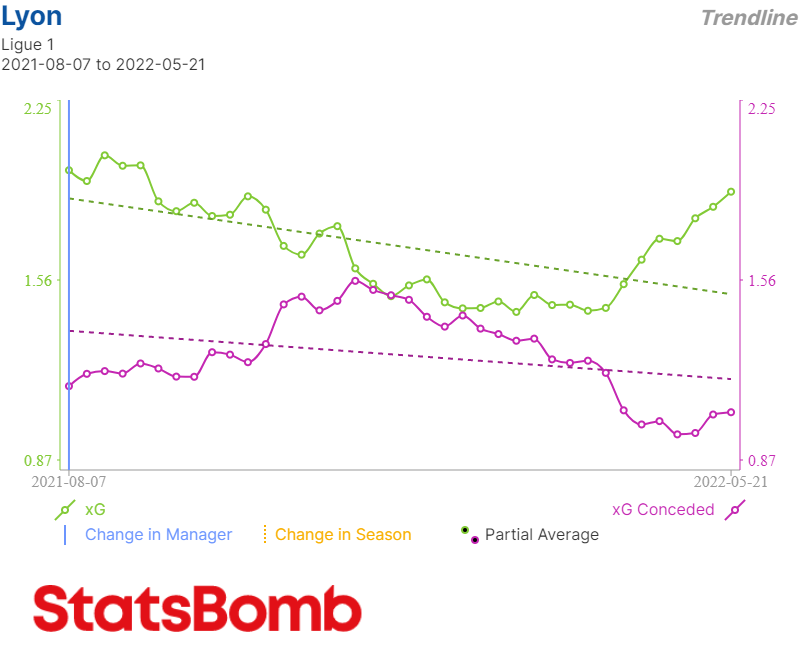
On-Ball Value: Where do Ligue 1 teams create their threat on the pitch?
On-Ball Value (OBV) is our possession value model, a method of measuring the value of each action that took place on the pitch based on the positive or negative impact it had on a team’s likelihood of scoring (or conceding). This allows us to give credit to the most valuable actions in a possession chain – those that had the greatest impact on increasing a team’s chances of scoring – beyond the pass before the shot or the shot itself.
We can use OBV to assess where each team were most dangerous to the opposition and where they created the most value.
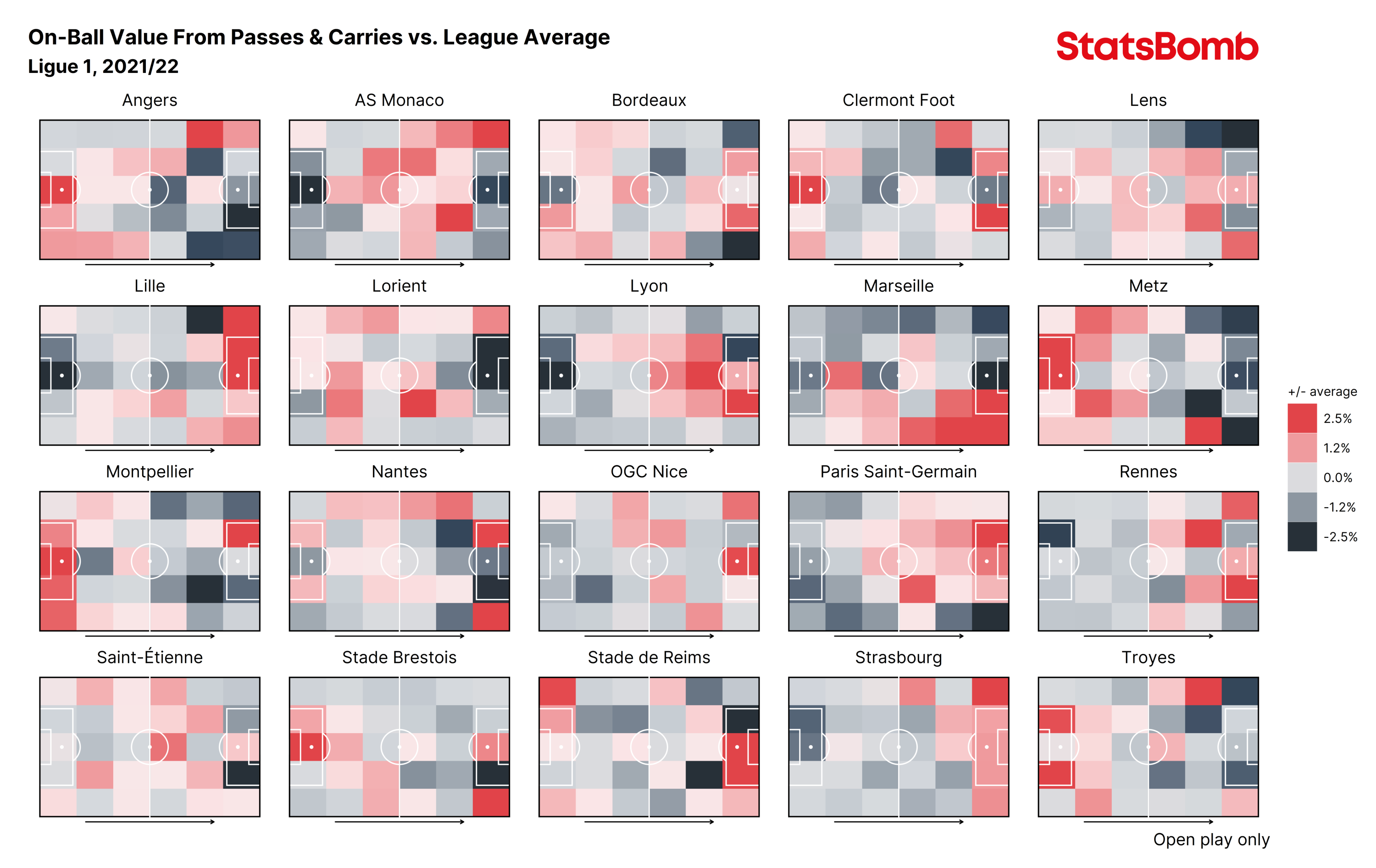
- Marseille were very productive down the right flank. The combinations between Dimitri Payet, Mattéo Guendouzi and Cengiz Ünder, supported by full backs Valentin Rongier and Pol Lirola, provided much value.
- Lyon tended to focus on slicing through the opposition in the central channels, with Houssem Aouar and Lucas Paquetá, in particular, combining very effectively when Lyon were in the attacking phase.
- Strasbourg were not afraid to play crosses into the box under Julien Stéphan. They attempted more crosses into the box than any other team last season – which is understandable when you have 6’6” forward Ludovic Ajorque to aim at. Their most dangerous attacks came from wide areas.
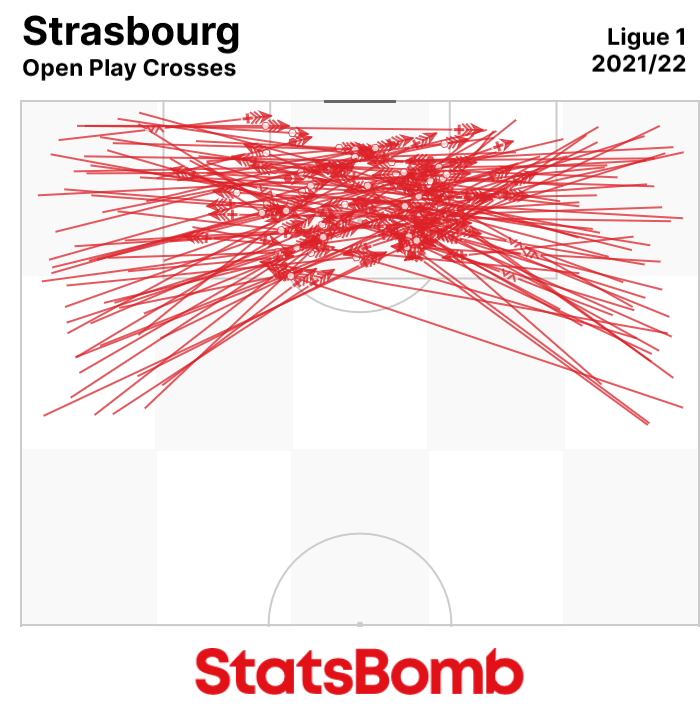
We can also use OBV to quantify how successfully two players combine. Perhaps unsurprisingly, the Lionel Messi to Kylian Mbappé pass combination was, by OBV, the most valuable connection in all of Ligue 1 last season.
Messi’s ability to see and execute precise through balls behind the defensive line. Mbappé’s raw pace and movement to make the runs to receive these passes and finish the move. They were made for each other.
Messi completed the most through balls in the Big 5 leagues in 2021/22, with 24. 13 of which were received by Mbappé.
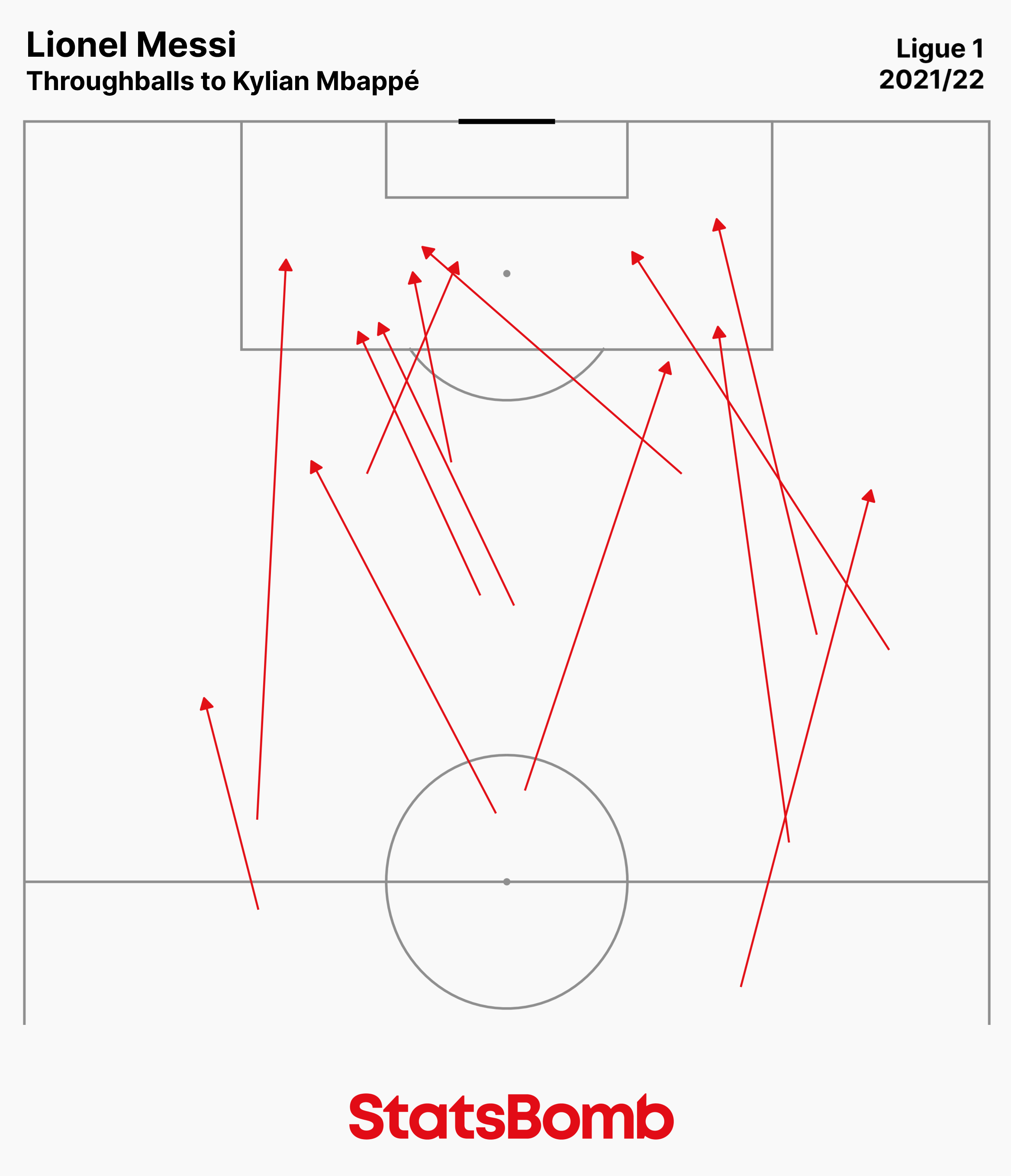
Where do Ligue 1 teams press?
We’ve looked at some aspects of the league’s play in possession. But what were they doing without the ball in 2021/22?
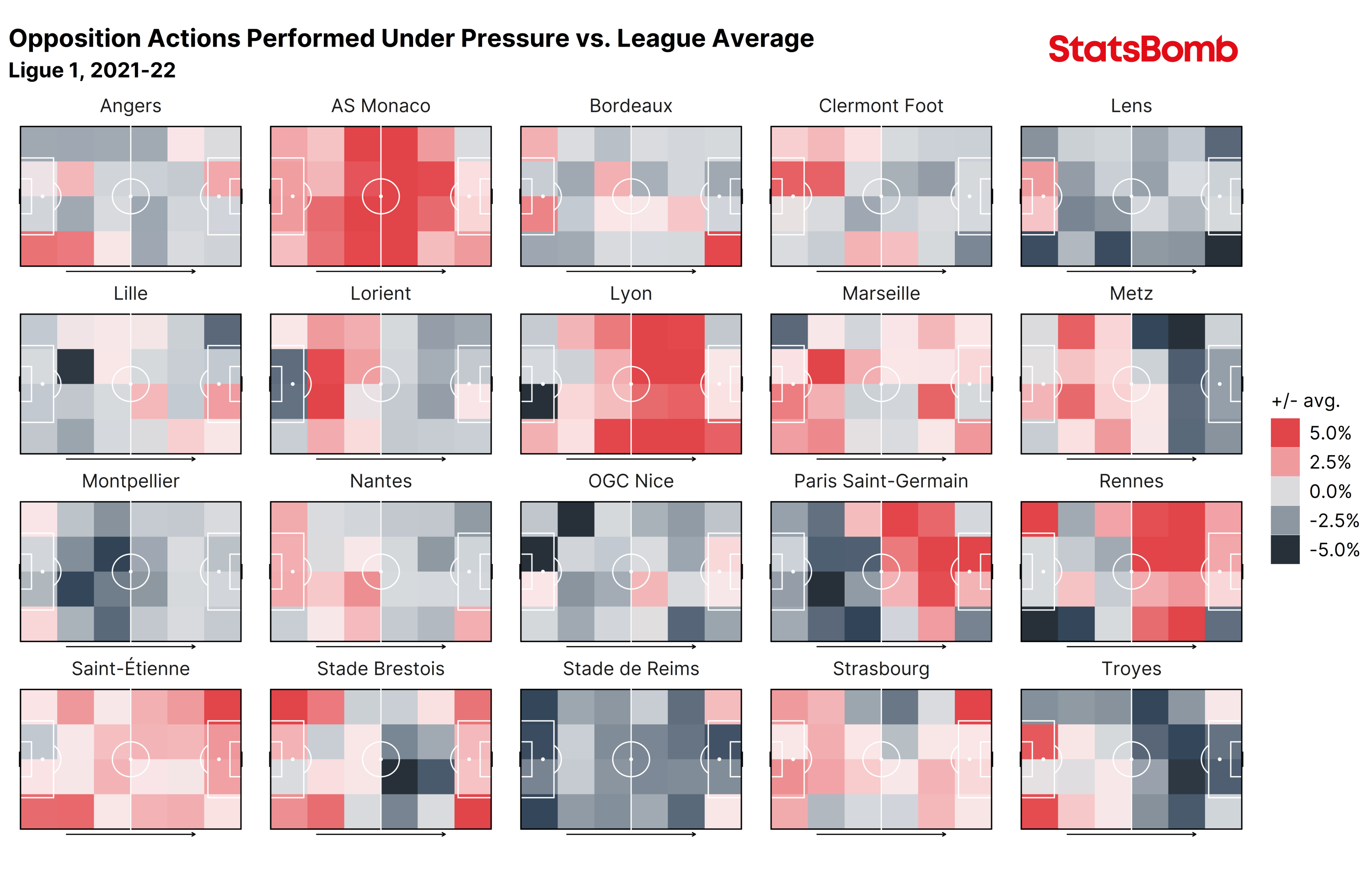
- Lens took a fairly passive approach to pressing last season, prioritising a stable defensive block over reducing the amount of time the opponent had on the ball. The approach was effective – they had the sixth-best defence measured by xG conceded.
- On the flip-side, Saint-Étienne were one of the most aggressive pressing sides in the league but were unable to execute it successfully, resulting in their relegation to Ligue 2.
- There were signs that PSG’s press was not working. They made a higher percentage of their pressures in the attacking half than any other team in Ligue 1. But, in their defensive half, they did not tend to have the players making recovery runs to apply heavy pressure on the opposition.
The most aggressive pressing side in Ligue 1 last season was Monaco, though that may not persist after they replaced Niko Kovač with Philippe Clement.
Kovač had the team pressing very aggressively in the first half of the season, with 27% of their opponent’s ball receipts being pressured, tackled or fouled within 2 seconds (known as their Aggression %). It was working too – Monaco had the fewest xG Conceded at the halfway point.
However, Kovač could not coach them into a dangerous attacking unit and was let go at the start of 2022. Clement has come in and made them far more threatening - increasing their xG per game from 1.16 under Kovač to 1.53 - but their out-of-possession approach has become slightly less intense, indicated by an increase in their PPDA number and lower Aggression %.
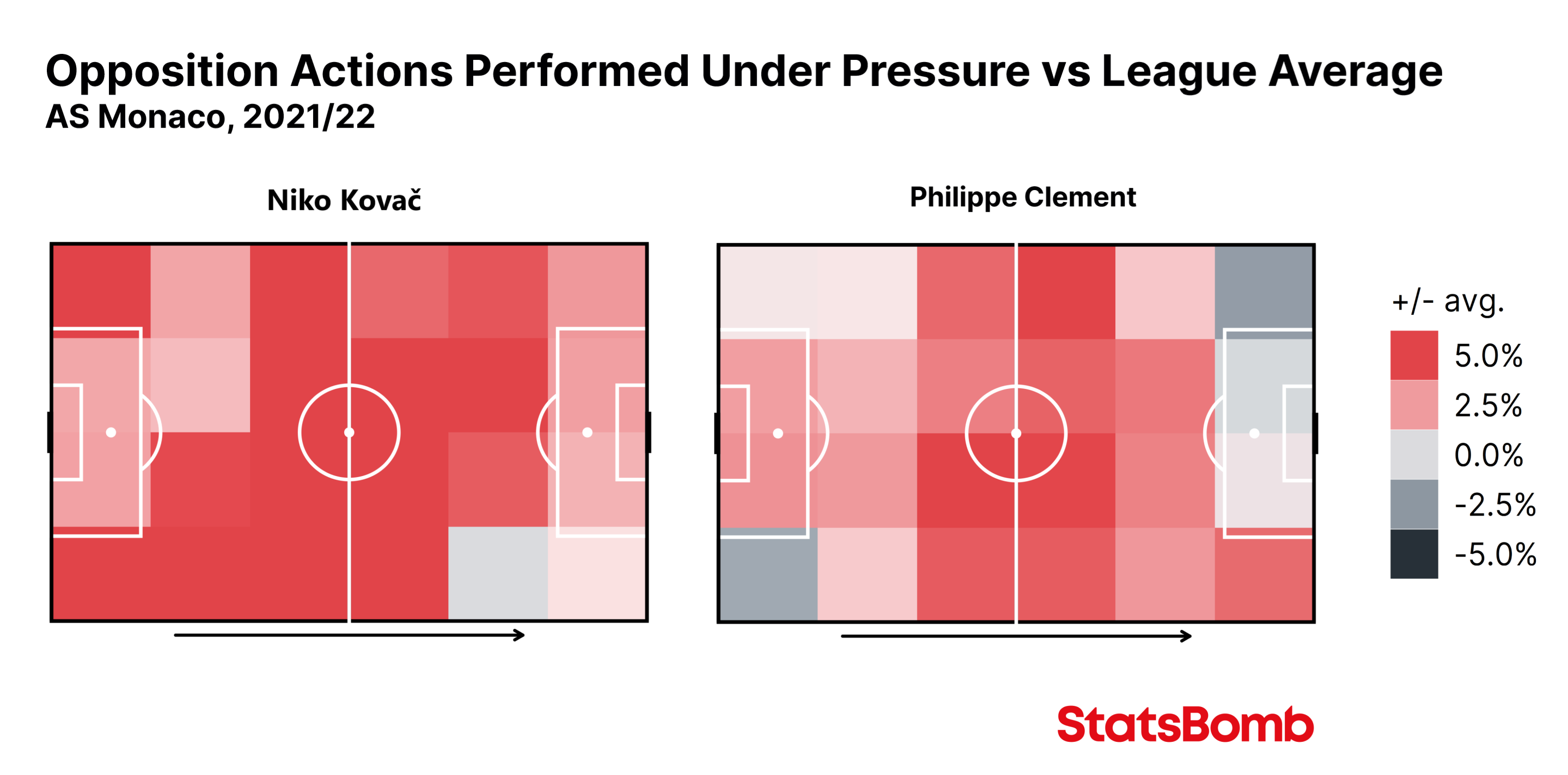
Line Breaking Passes In Ligue 1
What’s a StatsBomb season preview without having fun with our latest metric?
Using our StatsBomb 360 data - freeze frame event data containing the location of all players in the frame around every event – we’re now able to identify when a pass has broken an opposition defensive line.
Here are the top line-breaking passers in Ligue 1 from 2021/22.
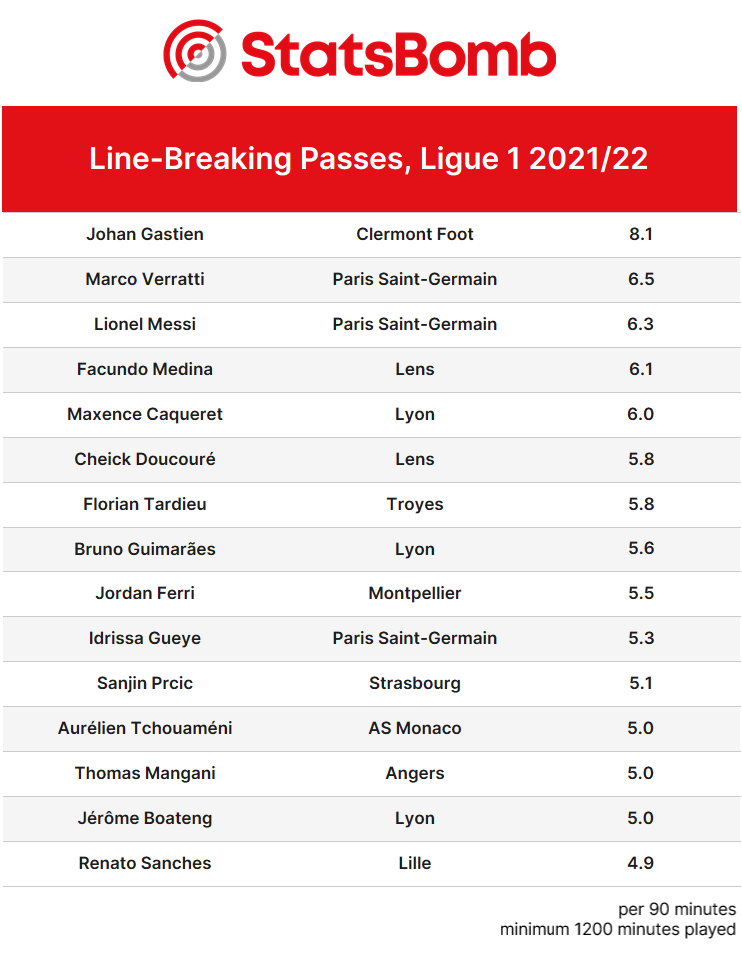
It’s time to tell non-Ligue 1 watchers about Johan Gastien.
In his 15-year career, Gastien has spent 13.5 seasons playing in France's lower leagues. His 2021/22 season with Clermont Foot was the first time, at the age of 34, that he’d played an entire season at Ligue 1 level, with his only previous top-flight experience coming in 2016/17 after he’d helped Dijon to promotion from Ligue 2.
The quirks don’t stop there. He was also signed by and plays for his dad, Pascal, the manager at Clermont Foot since 2017.
I think we can all agree that those facts, combined with Gastien’s ability to break lines and progress play with his passing, should make him the neutral’s favourite player in Ligue 1.
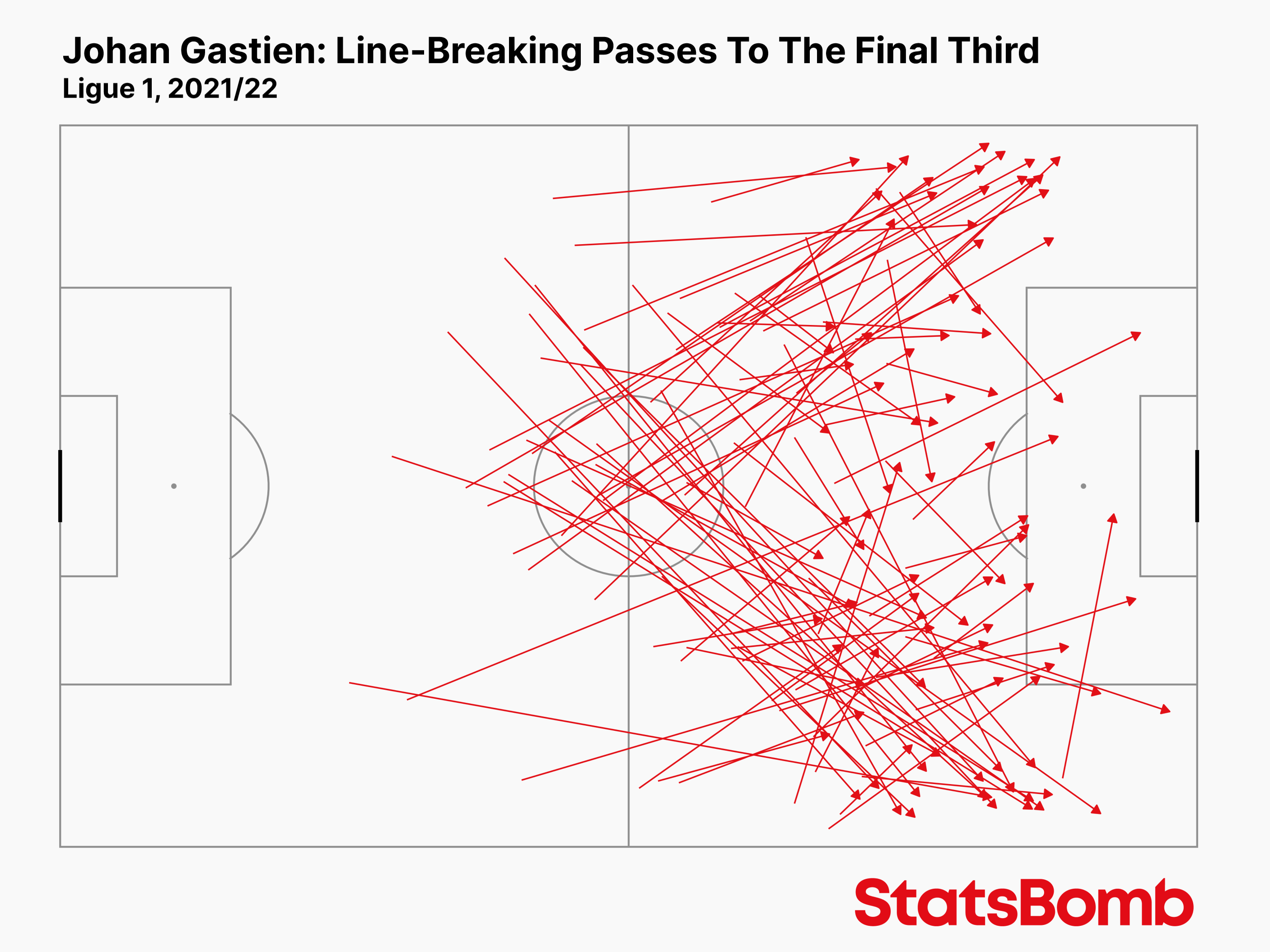
The Ligue 2 Promoted Teams
We welcome Toulouse, Ajaccio and Auxerre back to Ligue 1 following their Ligue 2 promotion last season.
Toulouse were by far the best team in Ligue 2 last season and deserved their title win. They had the best attack and the second-best defence, which equated to the best expected goal difference. They were also the best set-piece team in Ligue 2, something that should serve them well in their quest for Ligue 1 survival in 2022/23.
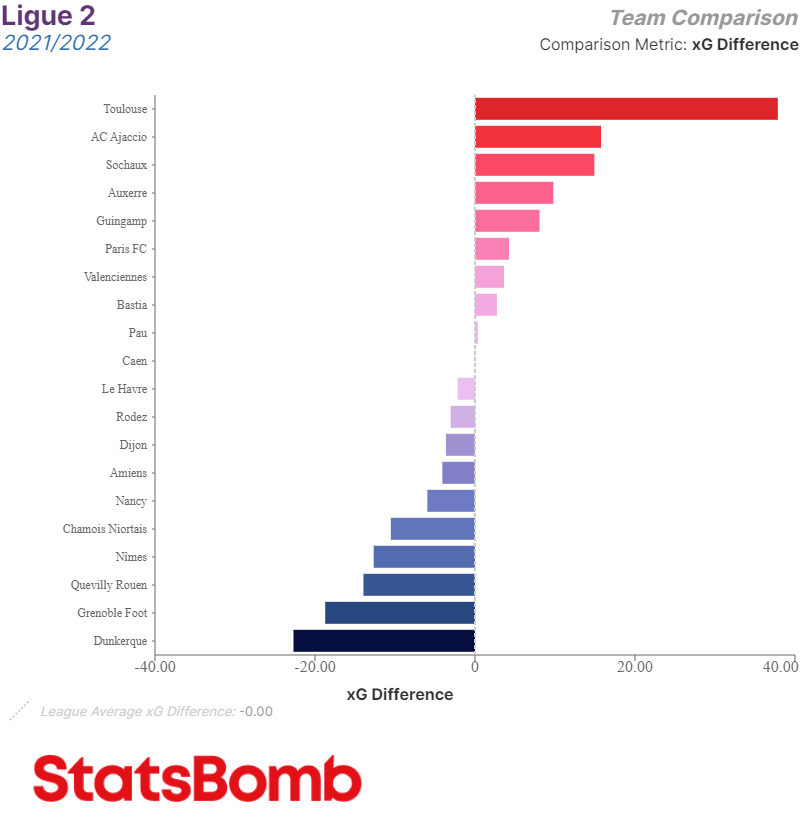
There’s plenty to look forward to in 2022/23. Thankfully, we don’t have to wait much longer.
